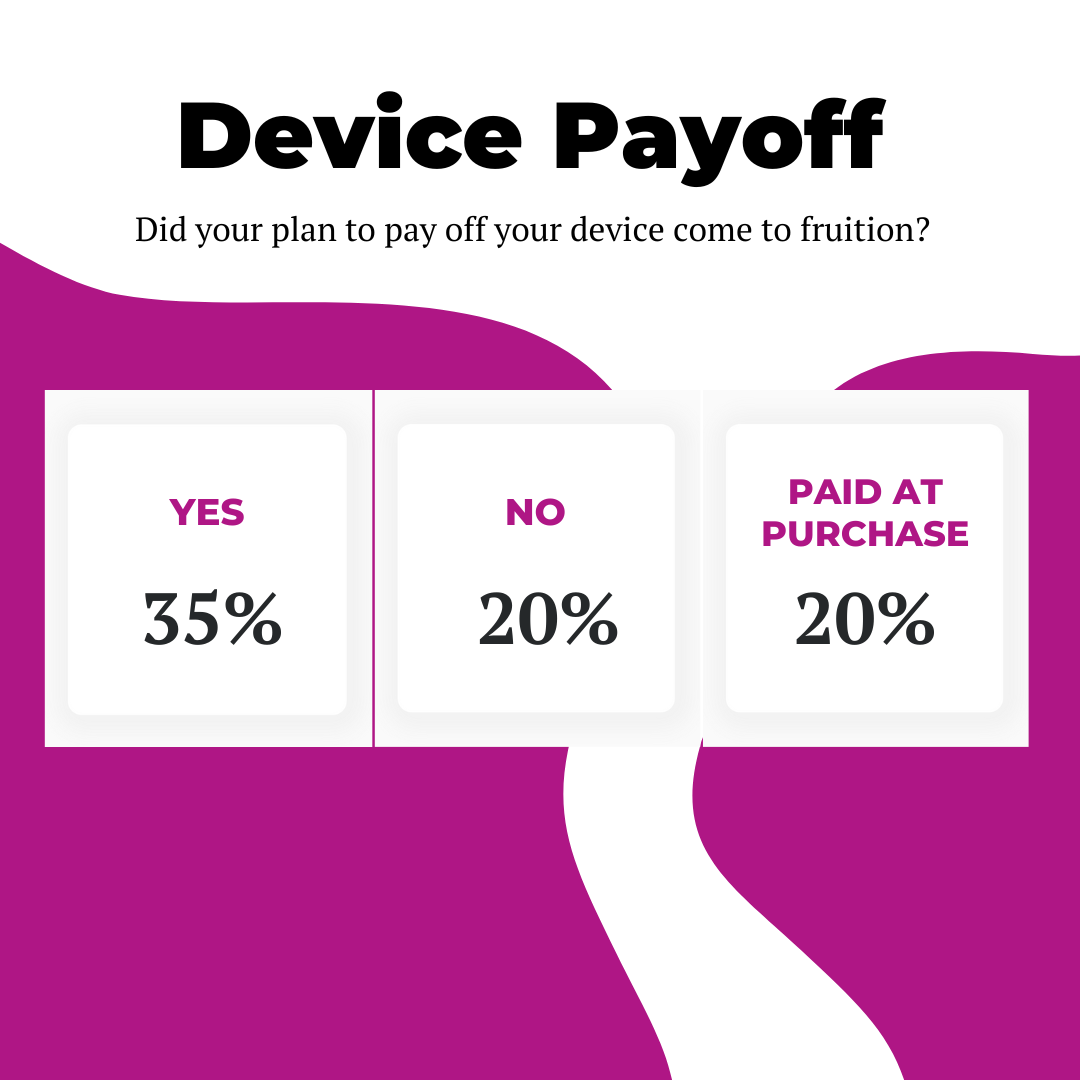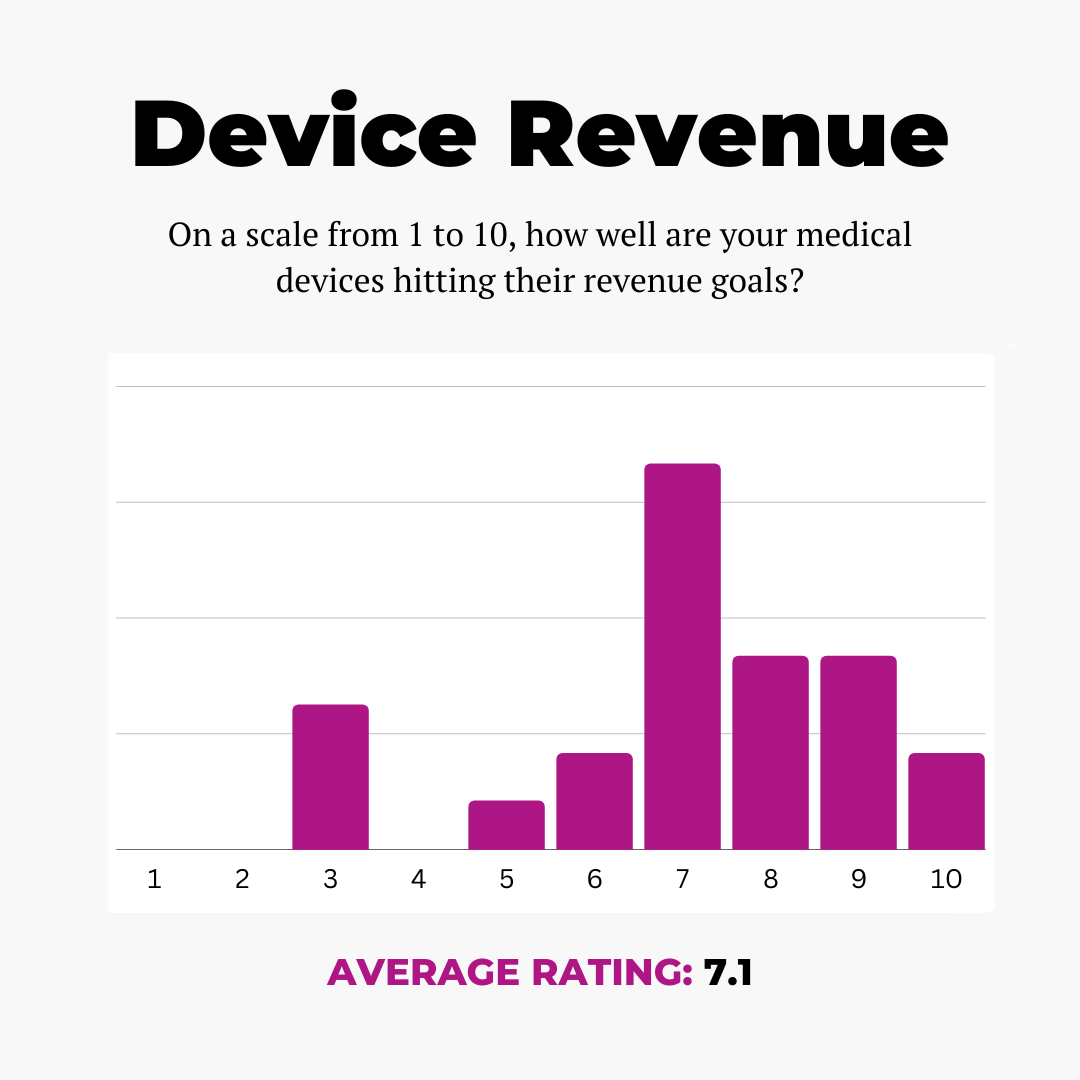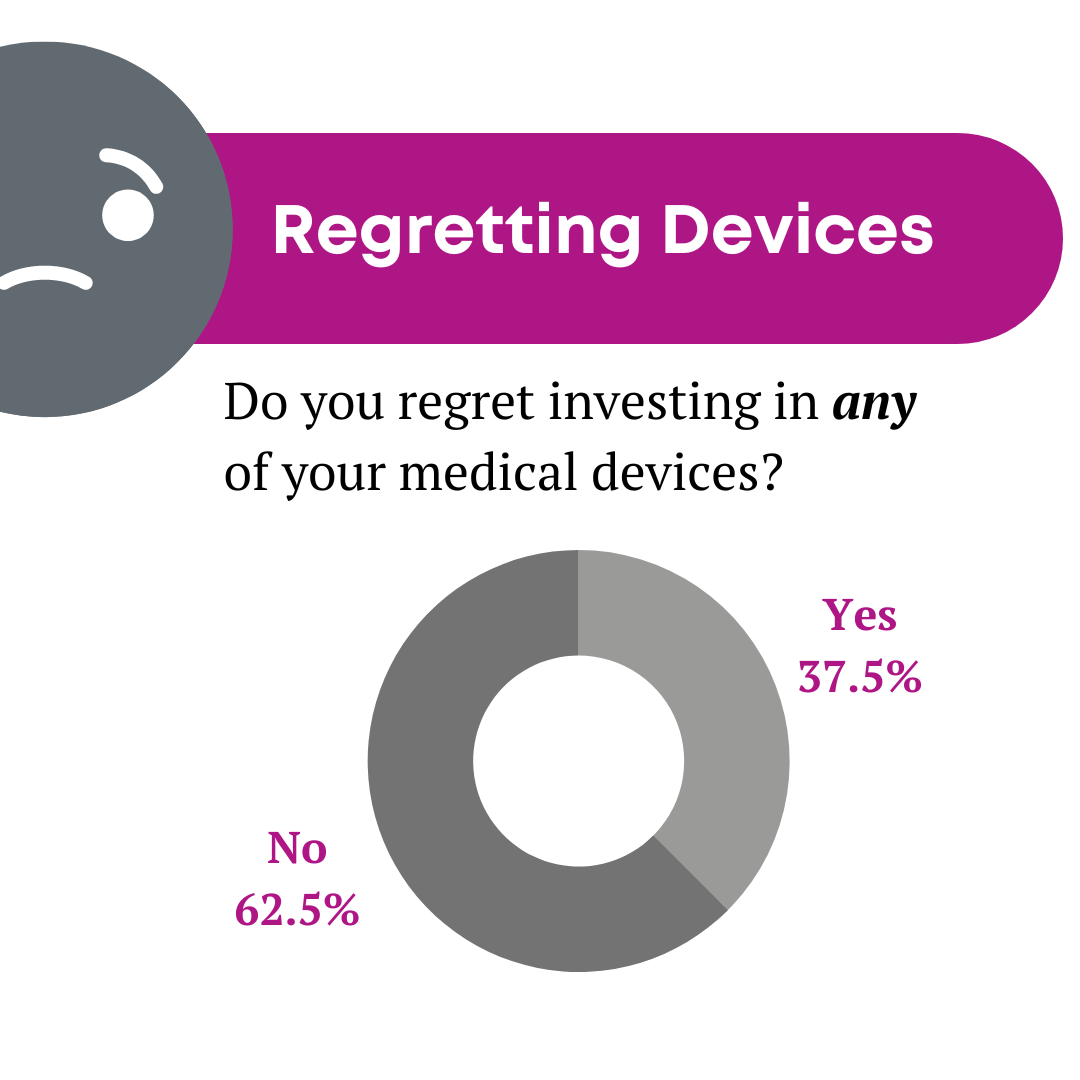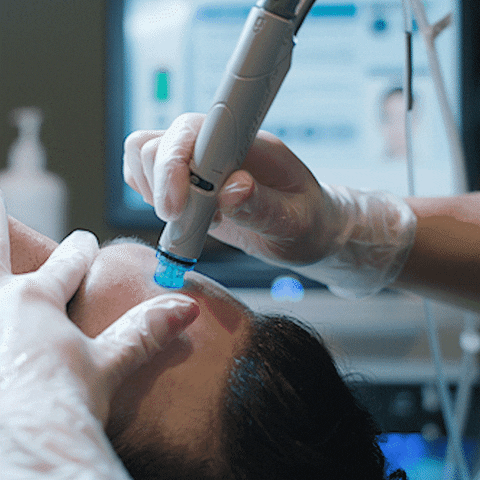| Editor’s Note: This article is part of our three-part series titled “The Device Economy.” In this series, we tackle what owning a medical aesthetic device will actually cost and generate your practice, if your office is a good fit for a new medical device and what to do after you’ve made the purchase. Here are links to all three parts: Part 1: The Real Economics of Medical Devices Part 2: Should I Really Purchase a New Medical Aesthetic Device? Part 3: For Reals, I Just Spent 100K On a New Device... Now What? |
Short attention span? Read the TL;DR.
Four score and seven years ago our fathers brought forth, upon this industry, a new tool, conceived in aesthetics, and dedicated to the proposition that all men and women want to improve their appearance…

Above: Abraham Lincoln presenting the first-ever medical aesthetic device … probably.
Alright, alright, fine. Employing the Gettysburg Address is maybe a little too dramatic of a way to introduce this series. But we needed to grab your attention because it’s time to have a deep discussion about a very common pain point among aesthetic practices: medical devices.
So, buckle up — in this three-part series, we will be covering all the information that you will need to successfully implement the use of a new medical device in your practice. Whether you have a collection of expensive tools sitting in the back storage room, or are diving into the device world for the first time, you’ll want to stick around for this information.
Where do we begin? Well, let’s draw some more inspiration from our man Abraham Lincoln. He told no lies, so let’s dive into some truths and figure out the real economics of device ownership.
How Much Does a Device Really Cost?
Most people are familiar with the process of going into a cell phone carrier store and signing up for a new plan. You browse the options they have, figure out what phone option is best for you and tell the person helping you what your decisions are.
Usually, it looks something like this.
“I’ll sign up for the $50/month unlimited everything plan, and I will take that shiny new iPhone for $30/month as well.”
The guy helping you gives you a smirk and says great, let’s get you set up. You assume after taxes, and even that activation fee, you are probably in for at least a couple hundred. He takes you over the register, and after a few moments and some keystrokes, he hits you with: that’ll be eight thousand and twenty seven dollars, sir.
Cash or card?

Paying for a medical device is kind of like that experience, albeit much more dramatic. You have the upfront costs, but that is only what it costs to own the device. Implementing it into your practice has its own expenses, and you should be aware of what those costs are early on in the consideration process.
Sticker Price
This is usually the most straightforward cost to anticipate. Most people work with a sales rep of the device manufacturer to process their purchase. They will give you the retail price of the machine, as well as some potential discounts or offers depending on what promotions they are running (if any) at the time.
(You should always go for discounts like you are a professional coupon clipper — no percentage left behind.)
Disposables
These are probably the most universally annoying costs to providers. Many machines — and definitely the majority these days — have a few different components that have to be replaced every time you use the device. So, for example, some laser devices have certain tips that need to be replaced every single use, or every 20 uses, or some other seemingly arbitrary interval. Other devices require topical solutions for each use, meaning you have to stay stocked on their gel or cream. Some even have special applicators that you dispose of every once in a while, but it still adds up in the long run. Consider carefully all the hidden costs that you will have to float to keep the device operational.
Marketing Costs
This is one expense we find many medical professionals do not anticipate. We won’t go too deep on breaking down the exact costs of these expenses (Part 3 covers that pretty well), but you should at least brace yourself for the fact that these costs probably won’t be inconsequential (don’t come at us for the double negative, grammar nerds), and they generally come in two varieties.
- Launch Plan. Sometimes, the device company will give you a stipend of money to work with for your marketing, or they connect you with someone to help you market the device yourself, or some variation of this general process. This agreement could last one, three or six months, maybe even a year, if you’re lucky.
- Forever Marketing. Then, you have the rest of the marketing to deal with yourself for as long as you are using the device. You are completely on your own here since the device company will only provide assistance during the launch plan. This is generally the tougher part to deal with, especially if you weren’t very hands on with the marketing process during the launch.
Maintenance Fees
Look, the devices you buy are built significantly better than the McDonald’s ice cream machines. You don’t need to worry about frequent or expensive catastrophic failure all that much. (Hopefully, you don’t have to worry about employees lying about the machines being broken, either.) As a general rule, this is high-quality technology you are bringing in, so while these costs might be few and far between, you can expect some maintenance fees to arrive at some point.
Here’s a general idea of how things usually work: some devices cover maintenance with the cost of the device, while others make you pay for maintenance or even subscribe to a service plan, which could run you up to $5,000 to $10,000 per year.
(So… maybe avoid things like throwing it into the back of a pickup when you are transporting it … just to be safe.)
Warranty Protection
It’s not all anticipated expenses, though, either. There are a few things you should know about that can help mitigate some of the expenses as well. For example, always ask about the details of your warranty. In the event it does go all McDonald’s soft serve on you, there is a good chance it might be covered within a certain time frame. Of course, knowing what isn’t covered is equally important.
Pay Per Use
Some devices charge you a fee every time you use it. No, we are dead serious. So, not only did you make arguably a small house payment on the device, but then everytime you fire up the device, you have to pay … again. Some devices can cost up to several hundred dollars per use. This is called the “card counter” system, because you get “cards” with a specific amount of utilizations. Wild, right?
Understanding how these different factors can influence your total cost of not only device ownership, but operation, will give you a clearer picture of what kind of financial investment you are really getting yourself into.
How Much Revenue Do Medical Aesthetic Devices Actually Generate?
Medical aesthetic devices generated $14.98 billion in revenue throughout 2021. That number is expected to increase to $36.34 billion by 2030 — just eight years from today. I know that doesn’t give you a ton of information for your specific practice, but the idea is that there is money to be made — and plenty of it.

The truth is that this is kind of a loaded question. Different devices have different returns, and different locations have different levels of demand. So it is virtually impossible to provide you with a direct answer that would be genuine to all the different devices you might be interested in purchasing.
But, if we narrow it down to a single standard piece of equipment, such as a laser system that can treat conditions like rosacea, leg veins, fine lines, wrinkles, etc., then we might be able to figure out how much revenue you could potentially generate from this one machine alone.
Figuring Out Your Potential Revenue
Let’s also assume that for your given area, level of competition, reputation and practice equity, you decide $500 a session is your price. (And yeah, we know some of you are probably ripping your hair out after reading that estimate — but the truth is treatments can go much higher or lower from practice to practice.)
Figuring out the price was the easy bit. Now you have to somehow hypothesize how many patients per month will be interested in laser treatment. The name might be popular among medical professionals, but it doesn’t hold the same kind of power that “Botox” does. So you’ll need to be thoughtful about your marketing and approach… but more on that later.

Maybe your practice sees 20 patients per day, five days a week. In four weeks, that is 400 total patients per month-ish. Now, what percentage of your patients have issues that can be addressed by this device? It’s a pretty versatile treatment, so let’s go big and say 30% of your patients could use this device. That’s potentially 120 people.
But some of them won’t be interested in laser treatment. Maybe they want injectables, surgery even. Or maybe TikTok has brought them to your office for the sole purpose of having microdermabrasion performed. In any case, we have to consider what percentage of those 120 people would be willing to try laser treatment over other options.
For that, let’s take a look at laser treatment popularity:
| Treatment | Procedures Performed in 2020 |
|---|---|
| Botulinum Toxin Type A | 4,401,536 |
| Soft Tissue Fillers | 3,410,730 |
| Laser Skin Resurfacing | 997,245 |
| Chemical Peel | 931,473 |
| Intense Pulsed Light | 827,409 |
*data provided by the American Society of Plastic Surgeons
Besides Botox and injectable fillers dominating this list, it’s looking light laser and light treatments are still comfortably in the top five most performed nonsurgical aesthetic treatments. There is some overlap in what Botox, fillers and laser treatments can provide, but not too much. So let’s just say that 10% of your patients are willing to sign up for the laser option.
That’s a whopping 12 patients per month. At $500 a pop, you could be looking at $6,000 in revenue each month, or $72,000 per year, if you maintain that 12 average. We aren’t even at the juicy part yet; strap yourselves back in for this, champ.
Your patient won’t be buying just one treatment – they buy packages. (Call us Amazon, because we f*cking love packages.)
So, to be conservative, let’s say you are selling packages of four treatments. You are now selling $2,000 worth of services to each patient instead of $500. Your 12 patients per month (less than one per day) are now generating you a smooth $24,000 per month, and a very enticing $288,000 per year.
Now, if you consider that the number of nonsurgical procedures performed consists of 77% repeat patients, we are starting to feel much more confident in this purchase, aren’t we?
But wait, the ghost of Billy Mays screams, that’s not all folks – there’s more.
Subtracting Your Device Costs
Remember all those fees and expenditures we mentioned earlier? Yeah, it’s time to subtract those from your revenue stream. The main one to consider here is the cost of your device. There are a few different ways to go about paying for a device: you can get into a payment plan or you can pay it off fully.
Incredible Marketing surveyed clients who are all in the medical aesthetic industry about their device payment plans. When asked how they handled it, only 20% paid for their devices in full at the time of purchase.

Financing is by far the most popular method of payment. This payment can range dramatically depending on the length of the contract, interest, device cost and promotions, but for our imaginary laser device, which could run up to $70,000, it is pretty safe to say you could be looking at a payment around $2,500 to $3,000.
Add in a healthy marketing budget, employee costs, maintenance costs, training fees, etc., and your costs could be anywhere in the neighborhood of $7,000 to $10,000. Still, a potential $15,000 in revenue per month in this illustrative 12-patient scenario isn’t too shabby. (We can hear the device reps now singing our praises.)
How Can You Manage Device Depreciation?
Here’s a tough pill to swallow, doc: your device will immediately go down in resale value the second it arrives at your practice. It’s the old “drive it off the lot” problem we are all too familiar with when purchasing a car. But, unfortunately, that’s also only the beginning of the possible depreciation you need to worry about.
If you were judging your device’s ability to hit target revenues on a scale from 1 to 10, we would really say that anything below a 10 isn’t ideal, while 8 and above might be acceptable if you are working on getting to that 10 mark.
By this reasoning, our survey showed that close to 71% of providers are probably pretty disappointed with the revenue their catalog of medical aesthetic devices have generated, and only 4.1% rated their satisfaction a 10/10.

In fact, 37.5% said they regret investing in at least one medical device.

Ultimately, being disappointed in a single device could just come down to aesthetic trends. Some treatments are more popular than others — but these trends change, so you are always taking a risk when purchasing a new device. But there are some historical examples of good and bad investments you can be aware of to help inform those future purchases you will inevitably make.
The Good, the Bad, and the … Good in the Bad?
Our clients, ever the MVPs, helped give us insight into what they considered to be the best and worst medical aesthetic device investments. A lot of names were dropped, but we aren’t here to start Twitter beef. Instead, let’s just look at a couple of examples of device categories that real providers identified as good investments for their practice.
All in all, there was a pretty good sentiment throughout the responses that laser and microneedling devices were very good investments for a practice. If you are just starting out, having these references might help you decide what to invest in early on in your device program. But let’s dive a little deeper into what makes a good and bad medical aesthetic device purchase.
Good Investments
Look, let’s just get this out at the start: the perfect device for your practice is dependent on about a million tiny factors that affect your position within the industry. These tips we are about to give you are ✨general recommendations based on prominent industry trends. ✨
Laser and microneedling devices seem to be pretty popular categories of treatment. So if you are going to make a decision based on recommendation from medical peers, those appear to be pretty safe options. Here’s some more good news: there are a ton of multi-use laser devices that can provide a ton of value to your practice and widen the number of patients you can treat with a single device.

The security is in the data, too. According to stats from the American Society of Plastic Surgeons, laser skin resurfacing and laser hair removal have been popular procedures with plenty of demand, even dating as far back as 2000. Microdermabrasion and IPL treatments have also been pretty steady.
Long story short, stick to these staples if you are looking to serve a wide audience and maximize your ROIs.
Trends Can Be Your Ally
Buying a device that serves an aesthetic trend can lead to a lot of disappointment. Once the fad eventually fizzles out, you are left with a very expensive machine in the corner of your office collecting dust.
If you are an avid dust collector, this is nothing but good news. Everyone else might prefer that device to be seeing some regular action, though.

But trends aren’t always bad. For example, if you saw a huge boost in injectable treatments in the last decade, you can thank the large handful of influencers and celebrities who popularized that look. And if Ulta Beauty’s Uncover Trend Report for 2022 got it right, the “natural” look is going to be taking over the space very swiftly.
That means plenty of opportunities to market and utilize medical aesthetic devices, largely known for their ability to provide results without creating an … well, let’s say overdone correction.
Based on market and social trends and the growing number of patients looking for nonsurgical options, we think it’s a pretty safe bet to take. Even the most popular social media platform today, TikTok, is known for its “come as you are” spirit. A stark contrast from the reign of Instagram’s “perfect version of yourself” approach.

New Technology Is Always On the Horizon
Here’s another thing to consider: new technology is constantly being developed. Which means that the thing that you purchase claiming to be the best in class now probably won’t be the best in its class for long.
Armed with that knowledge, you should be looking for devices that offer a strong 36-month outlook, which will likely be the life of your device payment. You need to pay for and profit within that three year period — otherwise it isn’t really a good investment for your practice.
TL;DR
Buying a new device isn’t just about the sticker price, you have to consider disposables, marketing costs, maintenance fees, warranty protection, pay per use charges, and the moon phase as well. Potential revenue is high, but so are operating costs. Do the math to figure out if the investment is worth it. 20% of practices didn’t hit their device pay-off goal, and only 20% paid in full at the time of purchase. Device depreciation happens, from a resale value perspective and potentially from a general interest perspective too. 71% of providers are disappointed in their device revenue, and 37.5% regret investing in at least one device. It’s not all doom and gloom — many devices are evergreen revenue producers, and swaying aesthetic trends can be your ally as much as your enemy.
Still Not Sure About Your Medical Devices?

Why would you be? This is stressful – a big risk, but an even bigger reward. Especially when you don’t want to put yourself in the red on a device payment for making a bad call. We recommend taking your time on this decision and really considering your options.
Want to know if your practice is positioned well for a new medical device? Check out Part 2 of this series.
And if the confidence never comes, no worries. We got your back. As usual, our educators are here to answer any questions you have, anytime, for free. Give us a call at (800) 949-0133 or schedule a one-on-one.




